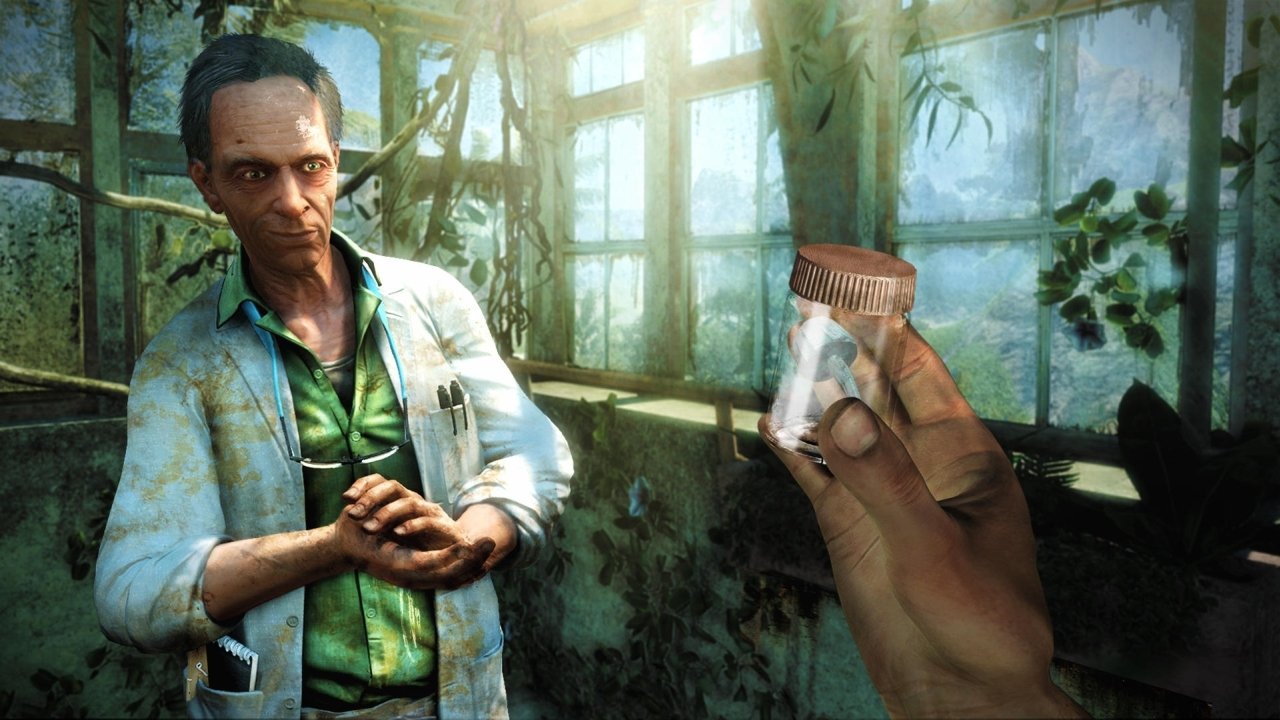Ubisoft Montreal’s Far Cry 3 is one of the best titles I’ve played in the recent months. The game’s gorgeous jungle environments, interesting characters, ambitious metanarrative and excellent action mechanics all come together to create something that is as memorable as it is difficult to put down. On a more specific level, it also has one of the best collectable systems in recent years.
In Far Cry 3 the player always has pretty urgent matters to attend to. The protagonist, Jason, needs to rescue his friends from a band of violently psychopathic pirates and mercenaries, but is distracted at every turn by optional missions that range from overthrowing enemy bases to climbing radio towers, hunting wildlife and searching for hidden letters or relics. Despite the narrative’s focus on constant progression — none of Jason’s pals are in a good place and they really do need his help as soon as possible — I found myself spending much of my time with the game chasing down these collectables and completing side missions. The story, as involved as I became in it, was almost always set aside in service of what would go on to become a compulsive need to complete the map, overthrow another pirate base or complete a vehicular time trial. These objectives were compelling because they all had immediate gameplay benefits (gaining skill points to sink into upgrades, earning cash to spend on weapons, unlocking fast travel stations, etc.), but were also tied into the story well enough that completing them made sense within the larger island-wide fight against the game’s villains.
Contrast the strengths of Far Cry 3‘s collectable systems with another recent Ubisoft Montreal game with a three at the end of its name and the difference becomes clear. Assassin’s Creed III, like many of the other entries to the series, is also an open world title with maps that are littered with bits and bobs to be hunted for. None of them are particularly useful, though, and many of these pieces of side content feel more like busywork than any variety of fun. Going over the books for trading caravans is about as exciting as filling out income tax forms and hunting the American frontier’s population of bears, wolves, beavers and deer provides no immediate gameplay bonuses. Worse, unlike Far Cry 3, ACIII is written in such a way that messing about with side objectives feels like a waste of time in comparison to what Connor can accomplish when taking part in the main story missions.

This is unfortunate because, barring Far Cry 3, prior Assassin’s Creed games had my favourite collectables. In ACII, Brotherhood and Revelations the player was encouraged to find items, climb structures and recruit assassins because doing so unlocked revenue sources, helped take control of cities away from the enemy and provided better weapons, customizable clothing and more. It’s strange, then, that Ubisoft Montreal’s Far Cry incorporated these lessons while the same studio’s most recent Assassin’s Creed dropped the ball.
Collectables have always been a part of videogames. From the point-boosting fruit that littered a Pac-Man level to the coins and 1-up mushrooms scattered throughout every Mario title, developers have often used extra items as incentive to fully explore the virtual worlds they’ve crafted. Like every aspect of game design, though, collectables shouldn’t be added to an experience for their own sake. Instead, they should mean something beyond a better “score” (unless, of course, the game in question is an arcade-style points race where the score is actually important). In looking at Far Cry 3, it’s pretty plain to see how collectables can continue to have relevance in the modern age of a medium that barely resembles its points-obsessed past. Most of us want to be given incentive to spend more time with the games we like playing, but developers have to be thoughtful with how they entice us. Collectables, when properly designed, are a great way to accomplish this.




